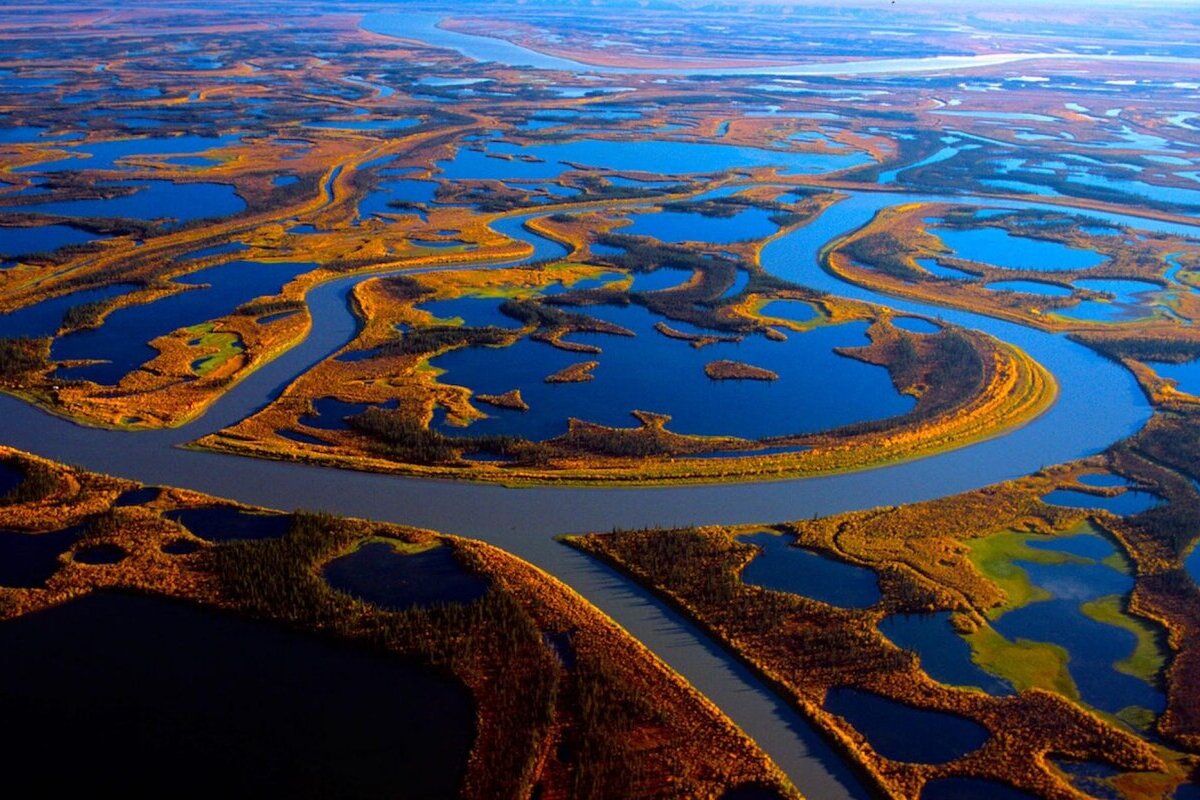River deltas are unique natural formations that occur where rivers meet seas, lakes, or other large bodies of water. They play a crucial role in ecosystems, agriculture, and the development of human civilization. In many regions of the world, deltas have become centers of settlement, trade, and culture. These interesting facts about river deltas will help you better understand their structure, functions, and importance for both nature and people. You may not have known that deltas are among the most productive yet vulnerable ecosystems on Earth.
- A river delta forms through the deposition of silt, sand, and other particles carried downstream by a river. As the river slows near its mouth, these sediments accumulate and create a complex network of distributaries. This process can take thousands of years. As a result, deltas often take on a triangular or fan-like shape.
- The word “delta” comes from the Greek letter delta, which has a triangular form. This name was inspired by the shape of the Nile Delta as seen on ancient maps. However, not all deltas are triangular — some are fan-shaped or highly branched. The Mekong Delta, for example, has a vast and intricate system of channels.
- Deltas are extremely fertile due to the constant supply of nutrient-rich sediments. This is why humans have settled in these areas for thousands of years and practiced agriculture there. Many ancient civilizations, such as Ancient Egypt, developed in delta regions like that of the Nile. Even today, deltas feed and support millions of people around the world.
- One of the most famous deltas is the Nile Delta, covering more than 20,000 square kilometers. It is Egypt’s main agricultural zone and sustains a significant portion of the country’s population. The delta is so densely populated that it ranks among the most populated delta regions in the world. It serves as a powerful example of how nature and human history are closely linked.
- The Ganges-Brahmaputra Delta in Bangladesh and India is the largest in the world, with an area exceeding 100,000 square kilometers. Over 100 million people live in this delta, relying on it for water, food, and transportation. However, it is also highly prone to flooding and tropical cyclones. This makes it one of the most vulnerable deltas on the planet.
- Many deltas are home to unique and endangered species of plants and animals. For example, the Danube Delta in Romania hosts pelicans, otters, turtles, and numerous rare fish species. It is one of the largest wetland areas in Europe and is designated a UNESCO biosphere reserve. Its diverse habitats make it a haven for scientists and conservationists.
- The Mississippi Delta in the United States is vital to the country’s fishing, agriculture, and energy sectors. However, the delta is rapidly shrinking due to altered river courses, erosion, and rising sea levels. Over the past 50 years, it has lost more than 4,000 square kilometers of land. Conservation programs are underway to try and slow this loss.
- Deltas often host major ports due to their strategic locations for river and sea navigation. Rotterdam, located in the Rhine-Meuse delta, is one of Europe’s largest and busiest ports. Its location allows for efficient trade links between inland waterways and the sea. Such ports are key nodes in global shipping and commerce.
- Deltas play a vital role in naturally purifying water. Wetlands, reed beds, and microorganisms help filter pollutants and break down organic matter. This improves water quality in rivers and coastal zones. In this way, deltas act as natural defenses against environmental contamination.
- In some deltas, floating or marshy land masses known as floodplains form. These areas can shift, disappear, or reappear depending on seasonal and environmental conditions. They are highly dynamic and sensitive to climate change and human activity. Yet, they support extraordinary levels of biodiversity.
- Deltas can be classified into different types depending on dominant natural forces — river-driven, wave-dominated, or tectonic. Examples include arcuate, bird-foot, cuspate, and mixed deltas. Each type has a unique structure and formation process. They vary in the number of distributary channels, shape, and sediment characteristics.
- Many deltas are at risk of being submerged due to rising global sea levels. Climate change threatens to displace millions of people living in deltas like the Mekong, Ganges, and Irrawaddy. This poses a serious threat to food security and ecological stability. Governments and international organizations are developing adaptation strategies to address these risks.
- Deltas are major repositories of sediments that have accumulated over millions of years. These layers often contain fossils, evidence of past climates, and geological processes. Studying deltaic deposits helps scientists reconstruct Earth’s history. Deltas are also important sites for oil and gas exploration.
- Deltas are highly sensitive to human activity such as land reclamation, dam construction, canal building, and industrial development. Such actions can disrupt the natural balance and lead to the loss of species. Many countries now run conservation and restoration programs to protect deltas. Safeguarding these ecosystems is one of the key challenges of modern environmental science.
These amazing facts about river deltas show just how important they are to both nature and humanity. Deltas provide food, water, biodiversity, and cultural heritage, yet remain highly susceptible to environmental changes. You may not have realized that deltas influence global processes just as much as mountains or oceans. That is why they deserve our attention, respect, and protection.





